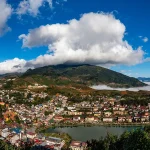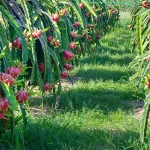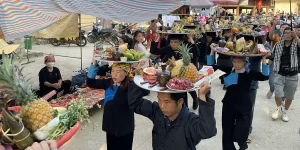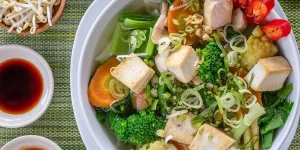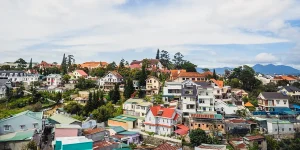Understanding Sapa
Sapa is a mountain town in northern Vietnam, near the Chinese border. It rests in the shadow of the Hoang Lien Son mountains, a range that includes Fansipan, the country’s highest peak. The best things to do in Sapa revolve around its dramatic terraced rice fields and the cultures of local ethnic minority groups.
This destination appeals to trekkers, photographers, and travelers seeking cultural immersion. However, those looking for pristine nature without crowds or a vibrant nightlife might be disappointed. The central town can feel commercialized.
Plan for at least three days to explore the valleys properly.
Table of Contents
One Minute History Lesson

The French established Sapa as a hill station in the early 20th century. They sought an escape from the summer heat of the Red River Delta. This colonial influence is still visible in the town’s architecture, including the stone church and old villas.
Before, the area was a quiet home to ethnic groups like the H’mong and Red Dao. They cultivated rice on the steep mountainsides, creating the iconic terraces.
After Vietnam’s independence and the rise of tourism in the 1990s, Sapa transformed from a remote market town into a major travel hub. This rapid development brought both economic opportunity and significant challenges to the local culture and environment.
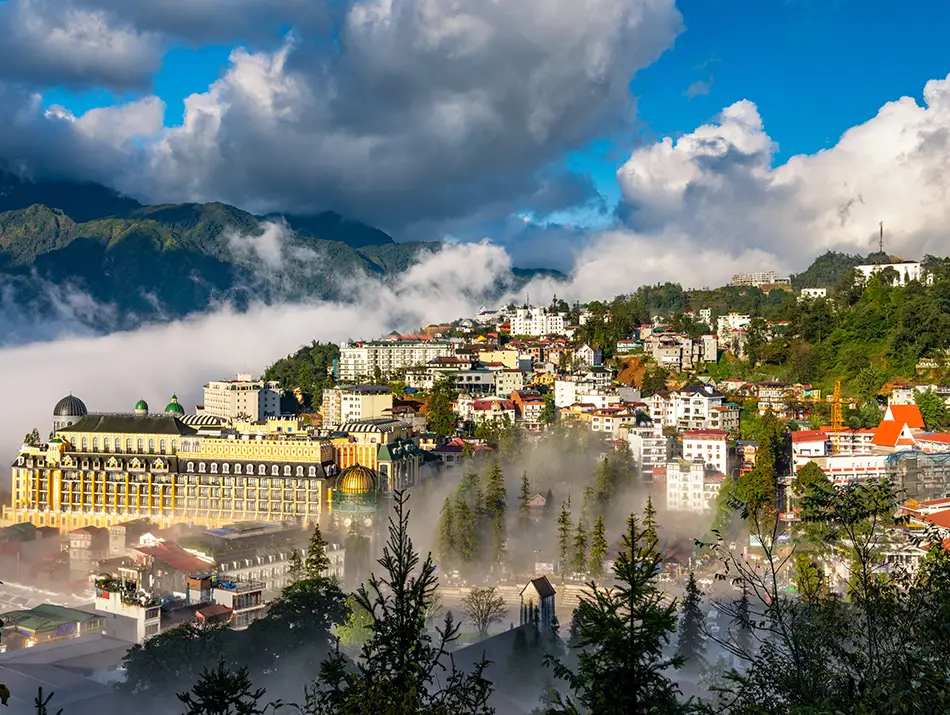
Sapa at a Glance
- Known For: Stunning terraced rice paddies, diverse ethnic minority cultures, and trekking through the Hoang Lien Son mountains.
- Best Time to Visit: March to May for warm weather and blooming flowers. September to early October for peak golden rice fields. November is still good for trekking.
- Getting There: Most travelers arrive from Hanoi via overnight sleeper bus or a train to Lao Cai followed by a one-hour bus ride.
- How Long to Stay: 3 days and 2 nights allows for a good trek and town exploration. Stay longer for deeper valley hikes.
Later in this guide, you’ll find everything you need to plan a trip to Sapa — when to go, how to get there, where to stay, and what to eat and drink. But first, let’s jump straight into the best things to do and see in Sapa, so you can quickly judge whether this mountain town is worth your visit and matches your travel style.
Best things to See in Sapa: Sights & Attractions
Sapa’s landscape offers many natural and cultural sights. These locations showcase the region’s mountains, valleys, and local history. Many of these top attractions in Sapa are accessible from the main town. They provide visitors with clear views and structured cultural experiences.
1. Fansipan Peak
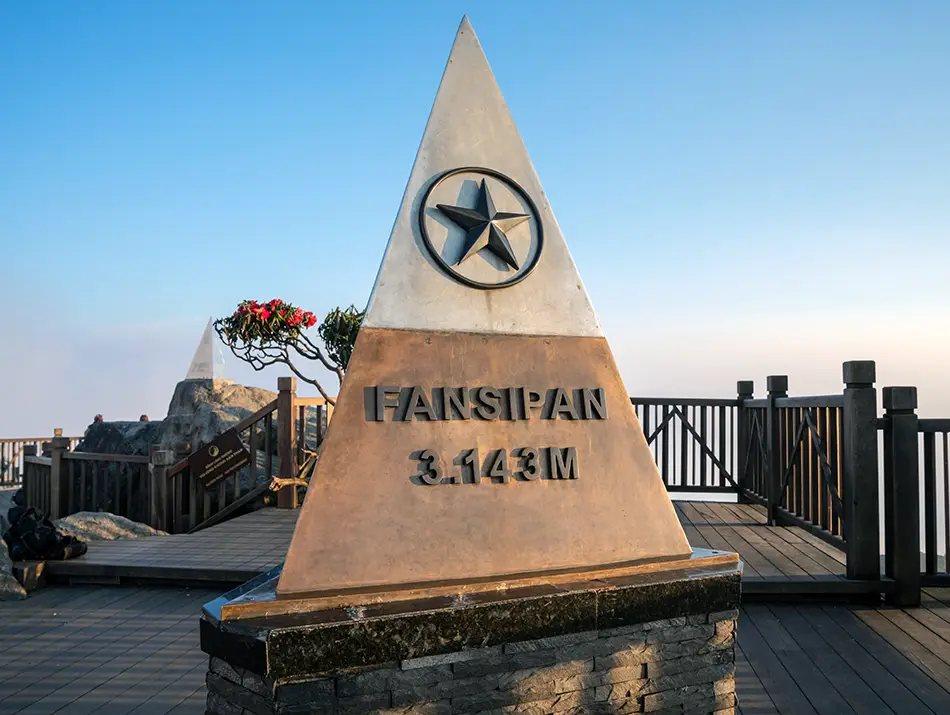
Fansipan (Phan Xi Păng) is the highest mountain in the Indochinese Peninsula and Sapa’s most famous landmark. At the summit, you’ll find a sprawling complex of temples, pagodas, and a towering bronze Buddha set against sweeping mountain scenery.
Most visitors reach the top by taking the modern cable car, which glides over terraced rice fields and forested slopes on the way to the upper station. The views can be spectacular on clear days, though fog often rolls in quickly at high altitude. For adventurous hikers, Fansipan can also be reached by a strenuous multi-day trek, but this option requires a guide and a good level of fitness.
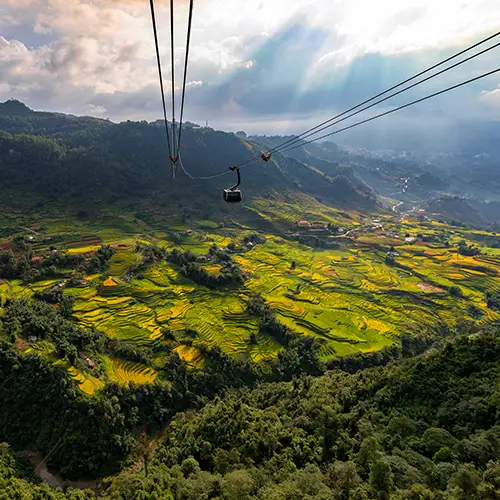
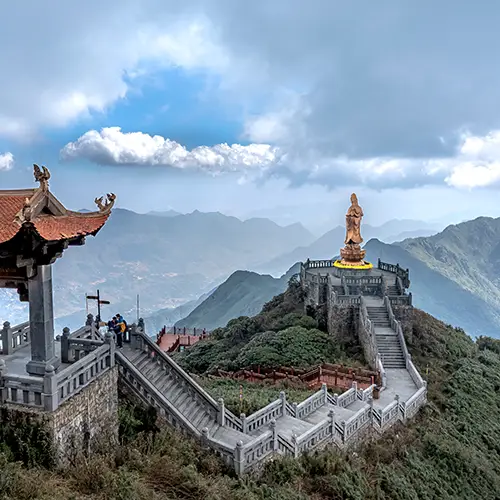
- Hours and Tickets: Cable car operates daily from 8:00 AM. A round-trip ticket costs around 800,000 VND ($32/€30) for adults.
- Time Needed: 3–4 hours, including travel and time at the summit.
- Travel Tip: Go on a clear morning for the best chance of good visibility, and check the weather forecast specifically for the peak. If possible, visit on a weekday — weekends draw larger crowds, which can mean longer lines at the cable car.
- 📍Cable Car Station on Google Maps
2. Cat Cat Village
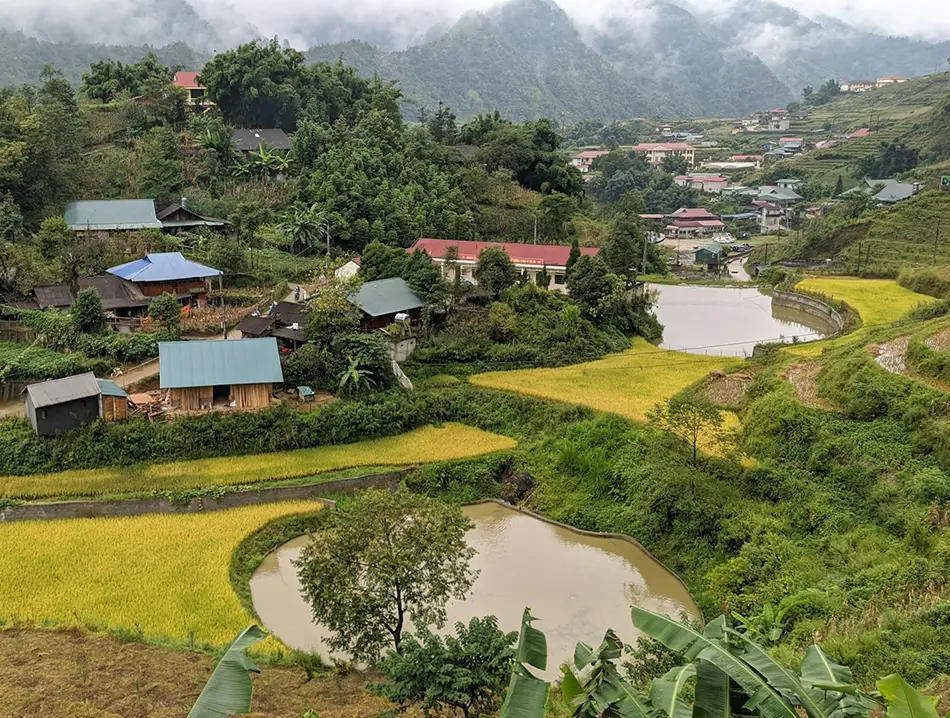
Cat Cat Village is a Hmong village located near Sapa town. It has been developed specifically for tourism. The village features traditional-style houses, craft shops, and a waterfall. It offers a structured glimpse into Hmong culture.
A paved path leads visitors through the village in a one-way loop. You will see locals weaving fabric and selling souvenirs. The area is highly commercialized and can feel staged. It is a convenient but not fully authentic cultural experience.
- Hours and Tickets: Open 6:00 AM to 9:00 PM (hours can vary by season and shop). The entrance fee is 150,000 VND ($6/€5.60).
- How to Get There: A 1.2-mile (2-km) walk downhill from Sapa town or a short taxi ride.
- Time Needed: 2–3 hours.
- Travel Tip: The walk back to Sapa is steeply uphill. Consider taking a motorbike taxi.
- 📍Cat Cat Village on Google Maps
3. Sapa Stone Church
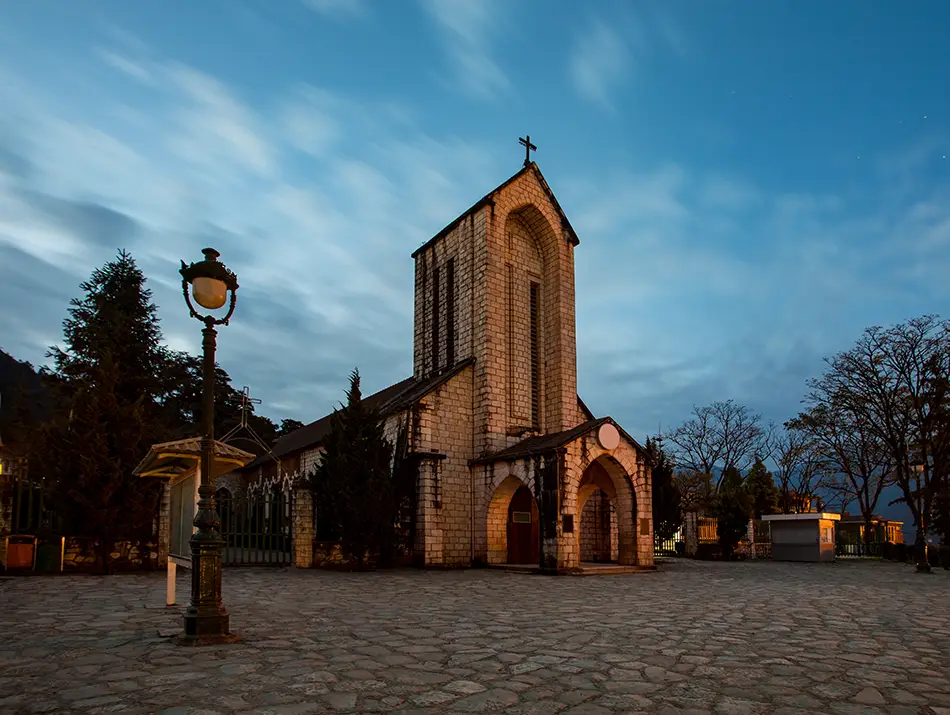
The Holy Rosary Church, known as the Sapa Stone Church (Nhà Thờ Đá Sapa), is a central landmark in Sapa. Built by the French in the early 20th century, it is a prominent example of Gothic architecture. The church is located in Sapa’s main square and remains an active place of worship.
The stone structure stands out against the surrounding town. Its grounds are a popular gathering spot for locals and tourists. You can observe the exterior architecture and attend a service if your visit coincides with one. The interior is simple and quiet.
- Hours and Prices: The grounds are always open. The interior is open during service times. No entrance fee.
- How to Get There: Located in the center of Sapa town, easily accessible on foot.
- Time Needed: 15–30 minutes to see the exterior.
- Travel Tip: The church is beautifully illuminated at night.
- 📍Sapa Stone Church on Google Maps
4. Ham Rong Mountain
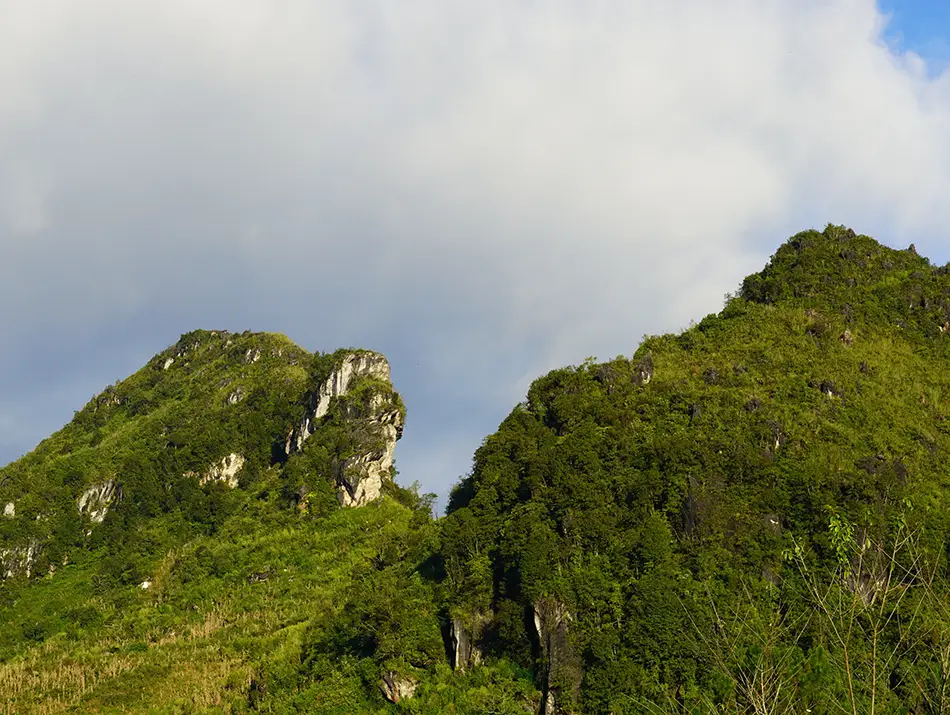
Ham Rong Mountain (Núi Hàm Rồng) is a landscaped park set just behind the Sapa Stone Church, offering a blend of flower gardens, rock formations, and scenic viewpoints. Its name, meaning “Dragon Jaw Mountain,” comes from the distinctive shape of its peak.
The walk to the top offers changing scenery from manicured gardens to rocky paths. The final viewpoint provides a panoramic view of Sapa town and the surrounding mountains. Visibility is heavily dependent on the weather.
- Hours and Tickets: Open 7:00 AM to 6:00 PM. The entrance fee is 70,000 VND ($2.80/€2.60).
- How to Get There: The entrance is a short walk from Sapa’s central square.
- Time Needed: 2 hours.
- Combines With: Sapa Stone Church and Sapa’s central square.
- Travel Tip: The path involves many stairs, so wear comfortable walking shoes.
- 📍Ham Rong Park on Google Maps
5. Silver Waterfall and Love Waterfall

These two waterfalls sit along the road toward Tram Ton Pass and offer different types of visits. The first is a quick stop with a short stair climb to the viewpoint, while the second requires a pleasant 1-mile (1.6-km) walk through forest to reach a larger, more scenic cascade. Both can get busy, especially on weekends.
- Hours and Prices: Open during daylight hours. Silver Waterfall fee: 20,000 VND ($0.80/€0.75). Love Waterfall fee: 75,000 VND ($3/€2.80).
- How to Get There: Located about 7.5 miles (12 km) from Sapa. Accessible by motorbike or taxi.
- Time Needed: 1.5–2 hours to see both.
- Combines With: A trip to Tram Ton Pass.
- Travel Tip: Visit on a weekday to avoid the largest crowds.
- 📍Love Waterfall 📍Silver Waterfall
-> If you are into chasing waterfalls, be sure to check out our Vietnam Waterfalls Map.
6. Tram Ton Pass
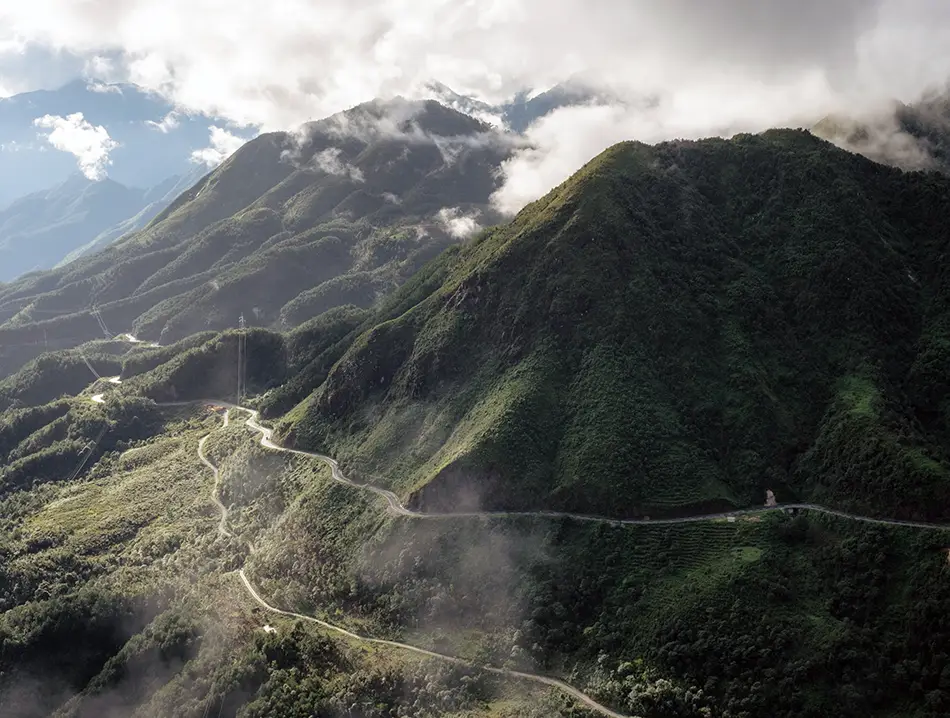
Tram Ton Pass is Vietnam’s highest mountain pass. It sits at an elevation of 6,233 feet (1,900 meters). The pass marks the divide between Sapa’s temperate climate and Lai Chau’s warmer climate. A viewpoint offers a place to stop and see the deep valleys.
The drive to the pass is scenic, with many sharp turns. From the viewpoint, you can see the road winding through the mountains. The view is impressive on a clear day but is often covered in clouds.
- Hours and Tickets: Open access with no fee.
- How to Get There: A 9.3-mile (15-km) drive from Sapa by motorbike or taxi.
- Time Needed: 1 hour, including travel and a stop at the viewpoint.
- Combines With: Silver Waterfall and Love Waterfall, which are on the same route.
- Travel Tip: Bring an extra layer of clothing as the pass is often cold and windy.
- 📍Location on Google Maps
7. Sapa Ancient Rock Field
The Sapa Ancient Rock Field (Bãi đá cổ Sa Pa) contains hundreds of large stones with carved engravings. These carvings are believed to be over 2,000 years old, though exact age remains unconfirmed. The site is spread across a valley near the village of Ta Van. The meaning of the symbols is still not fully understood by archaeologists.
Visitors can walk among the stones to see the ancient markings. Some carvings depict human figures, while others are abstract patterns. The site is not well-protected, and some stones are worn. A local guide can help locate the most significant engravings.
- Hours and Prices: Open access. The site falls within the Muong Hoa Valley entrance fee area.
- How to Get There: Located near Ta Van village, accessible by motorbike, taxi, or trekking.
- Time Needed: 1 hour.
- Combines With: A trek through Muong Hoa Valley or a visit to Ta Van village.
- 📍Ancient Rock Field on Google Maps
8. Moana Sapa Photo Park
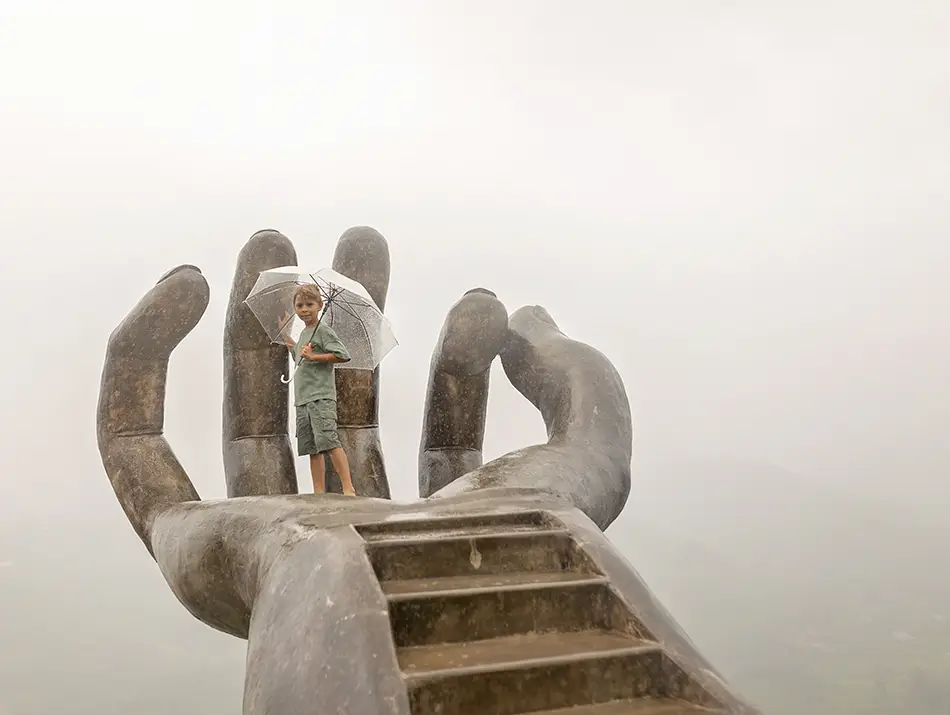
Moana Sapa is a purpose-built attraction for photography. It features various sculptures, swings, and backdrops designed for social media posts. The park is located on a hillside just about 500 m (0.3 mile) from the town centre of Sapa, with views of the mountains. It is a popular spot for younger travelers.
You can explore the different installations, such as a large hand sculpture and a “gate to heaven.” The experience is entirely focused on taking photos. The park can get crowded, leading to waits at popular photo spots.
- Hours and Prices: Open 7:00 AM to 5:30 PM. The entrance fee is around 80,000 VND ($3.20/€3).
- How to Get There: A short taxi or motorbike ride from the town center.
- Time Needed: 1–1.5 hours.
- Combines With: A visit to Cat Cat Village, which is nearby.
- Travel Tip: Arrive early in the morning right at opening time for photos without other people.
- 📍Moana Sapa on Google Maps
9. Saturday Love Market
The Saturday evening market in Sapa’s main square should not be confused with the annual Khai Vai Love Market. In Sapa, the “Love Market” you see today is simply a tourist-oriented night market with occasional cultural performances, not the original courtship gathering.
You will find a busy market with stalls selling local foods, crafts, and souvenirs. It is a lively place to walk around in the evening.
- Hours and Prices: Most active on Saturday evenings. Free to browse.
- How to Get There: Located in the central square of Sapa town.
- Time Needed: 1 hour.
- Combines With: Dinner at a local restaurant.
- Travel Tip: Focus on the food stalls for a more authentic local experience.
- 📍Sapa Love Market on Google Maps
Famous Museums In Sapa
- 📍Sapa Culture Museum: Displays artifacts and exhibits on the history and cultures of the ethnic groups in the Sapa region.
Best things to Do in Sapa: Activities & Experiences
Participating in Sapa activities offers a deeper connection to the region’s culture and nature. These experiences involve direct interaction with the landscape and local people. They range from physical treks to relaxing cultural immersions. These fun things to do in Sapa let you engage with the area beyond sightseeing.
10. Muong Hoa Valley Trek

Trekking in the Muong Hoa Valley is a popular way to see Sapa’s countryside. Treks can range from a few hours to several days. They follow paths through rice terraces and small ethnic minority villages. A local guide from a Hmong or Dao community often leads the trek.
You will walk on dirt paths, which can be muddy and slippery after rain. The guide provides information about local plants, farming techniques, and village life. The scenery is the main draw, with constantly changing views of the valley. A multi-day trek often includes an overnight homestay.
- Hours and Prices: Guided treks can be booked year-round, starting from around 400,000–700,000 VND (US $18–30/€17–28) for a day trip, and from roughly 1,3M–5,2M VND (US $50–200/€45–185) for multi-day treks depending on the route and inclusions.
- Time Needed: Half-day to 3 days, depending on the chosen route.
- Travel Tip: Wear sturdy, waterproof hiking shoes, as the trails can be challenging.
11. Motorbike Tour
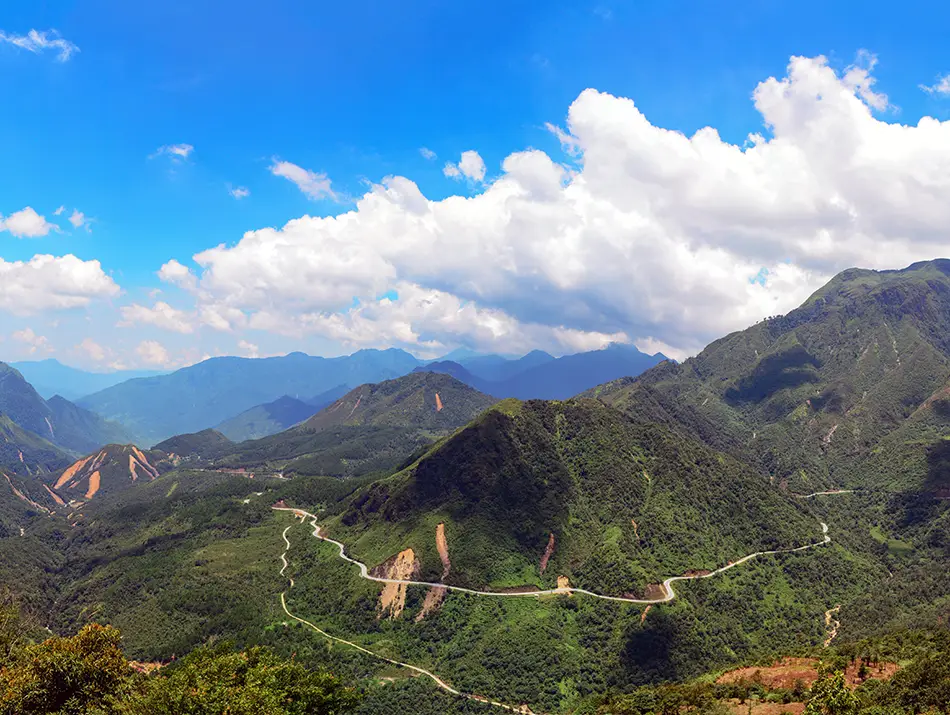
A motorbike tour allows you to cover more ground and see remote areas. You can rent a motorbike for a self-guided tour or hire an “easy rider” guide. The routes often include Tram Ton Pass, waterfalls, and distant villages. This is one of the best experiences in Sapa for independent travelers.
Riding a motorbike gives you the freedom to stop whenever you wish. The mountain roads are winding and can be steep. Traffic can be unpredictable. An easy rider tour is a safer option if you are not an experienced rider.
- Hours and Prices: Rentals cost about 150,000 VND ($6/€5.60) per day. Easy rider tours cost 800,000–1,200,000 VND ($32–$48/€30-€45) for a full day.
- Time Needed: A half or full day.
- Combines With: Silver Waterfall, Love Waterfall, and Tram Ton Pass.
- Travel Tip: Check the bike’s brakes and tires before renting, and always wear a helmet.
12. Ta Phin Herbal Bath

A traditional herbal bath is a specialty of the Red Dao people. In Ta Phin village, local families offer these experience to visitors. The bath uses a mix of medicinal herbs collected from the surrounding forest. It is believed to have restorative health benefits.
You’ll soak in a large wooden barrel filled with hot, dark-colored water infused with a strong, pleasant herbal aroma. It’s a deeply relaxing experience, especially after a day of trekking, and the setting is typically simple and rustic, adding to its traditional feel.
- Hours and Prices: Available throughout the day. A bath costs around 200,000 VND ($8/€7.50).
- How to Get There: Ta Phin village is about 7.5 miles (12 km) from Sapa. A taxi or motorbike is required.
- Time Needed: 2 hours, including travel.
- Combines With: A trek to or around Ta Phin village.
- Travel Tip: Many places offer this, but seek out one in a real family home for a more authentic experience.
13. Indigo Dyeing
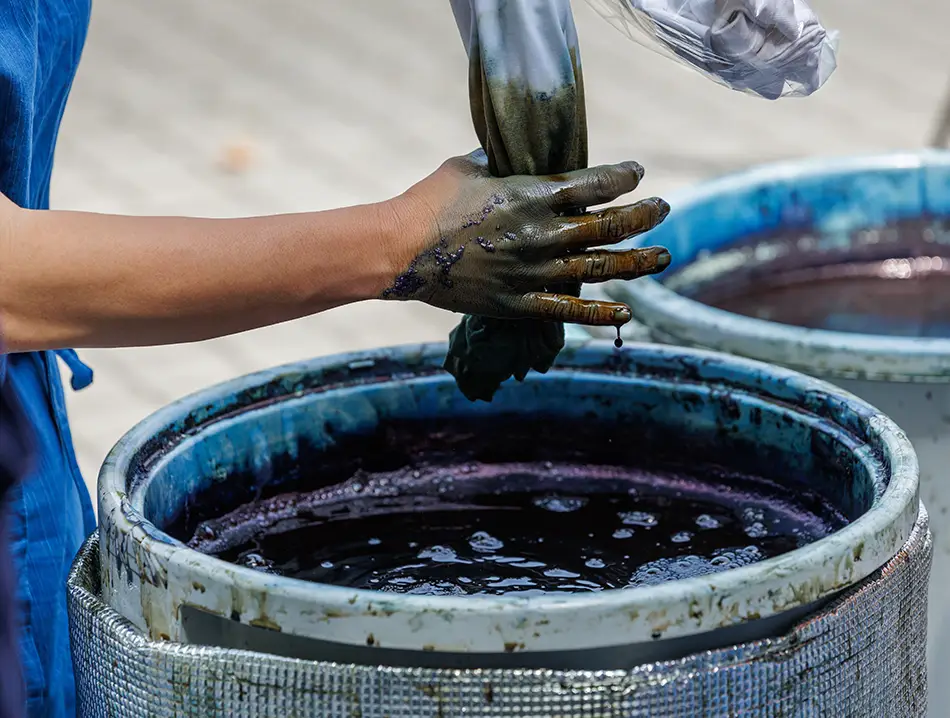
Watching local Hmong artisans work with natural indigo offers an intimate look at one of Sapa’s most traditional crafts. In villages like Ta Van and Ta Phin, families maintain small dyeing workshops where they prepare indigo vats, create patterns using stitching or wax techniques, and hand-dye fabric for clothing and textiles. Visitors can observe each step of the process — from mixing the dye to lifting the cloth from the vat as it turns from green to a deep blue in the open air.
Some artisans may invite you to try a simple dip or pattern fold, but the experience is primarily about seeing the skill and patience required to create these textiles. It’s a quiet, slow craft that reflects the cultural heritage of the Hmong community.
- Hours and Prices: Demonstrations last around 30–60 minutes. Expect to pay 50,000–150,000 VND ($2–$6 / €2–€5).
- How to Get There: Most demonstrations take place in Ta Van or Ta Phin villages, reachable by taxi or motorbike. Some guided treks include a stop at a dyeing workshop.
- Time Needed: 1 hour.
- Combines With: A herbal bath experience in Ta Phin, or a village walk in the Muong Hoa Valley.
14. Stay Overnight with Ethnic Minority Families

An overnight homestay offers a direct look into the daily life of a local family. Homestays are available in many villages around Sapa, such as Ta Van or Ta Phin. You will share a home with a family from a Hmong, Dao, or Giay community. The accommodation is typically simple.
Home-cooked dinner and breakfast is usually included. You can interact with the family and learn about their customs. Facilities are basic, often with shared bathrooms and thin mattresses on the floor. It is an immersive cultural exchange.
- Hours and Prices: Booked as part of a multi-day trek or arranged independently. A night typically costs from around 400,000 VND (US $17/€15).
- How to Get There: Homestays are located in villages outside Sapa town, reached by trekking or vehicle.
- Combines With: A multi-day trek through the Muong Hoa Valley.
- Travel Tip: Bring a small gift for the host family, such as school supplies for children.
15. Local Cooking Class
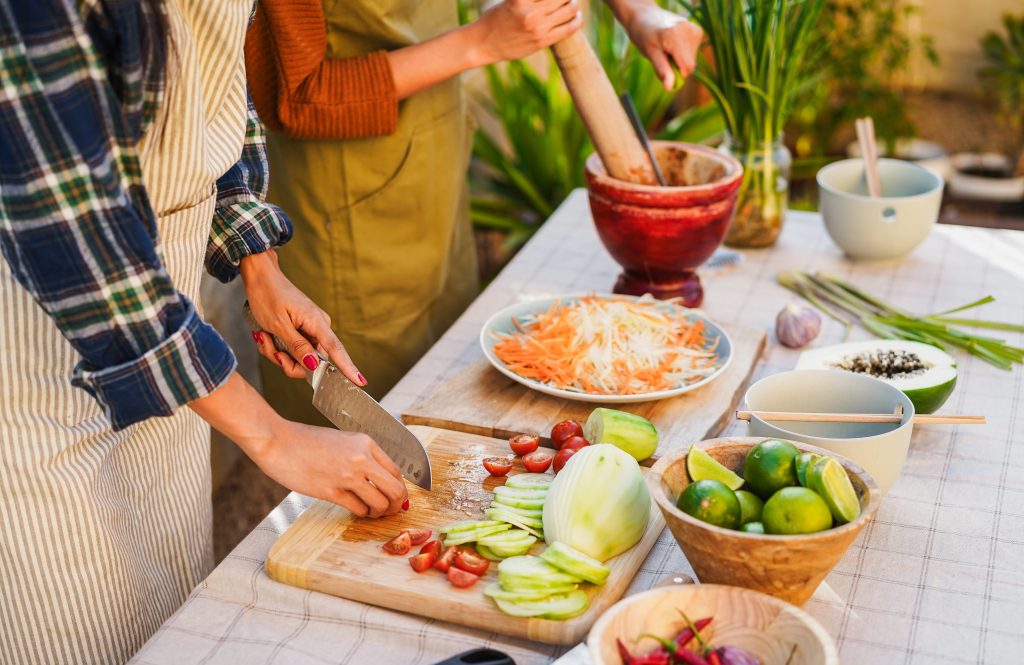
A cooking class with a local family introduces you to the preparation of regional dishes, often inside their own home in a nearby village. You’ll typically learn to make Hmong or Dao specialties, and many classes begin with a visit to the local market to choose fresh ingredients before returning to cook together.
You’ll get hands-on experience preparing dishes like spring rolls, smoked buffalo, or vegetable stir-fries, while the host guides you through the ingredients and cooking techniques. The experience wraps up with a shared meal, giving you the chance to enjoy the dishes you’ve just helped create.
- Hours and Prices: Classes usually last half a day and cost around 800,000 VND ($32/€30).
- How to Get There: Some classes include transportation from Sapa. Otherwise, a taxi is needed.
- Time Needed: 3–4 hours.
- Travel Tip: Ask questions about the different herbs and spices used in the local cuisine.
Best Day Trips From Sapa
Day trips from Sapa take you to regional markets and more distant areas. These excursions require a significant amount of travel time. They show a different side of life in Lao Cai province.
Bac Ha Sunday Market
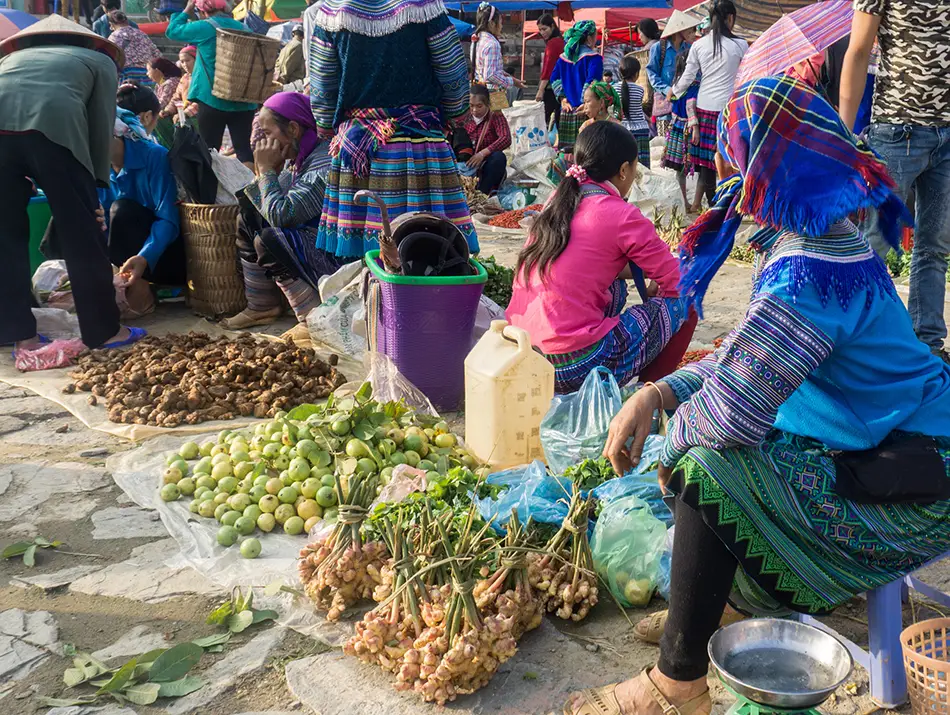
Bac Ha Market is one of the region’s largest and most colorful weekly markets, serving as a key trading hub for the Flower Hmong community. Villagers from across the area gather here to sell livestock, produce, and textiles, creating a lively scene that blends commerce, culture, and social connection.
The market only operates on Sunday mornings, typically wrapping up by early afternoon (around 12 pm-2 pm).
- How to Get There: A 2.5 to 3-hour drive from Sapa. Best visited with a shuttle bus or private tour.
- Time Needed: A full day, including travel.
- Combines With: Some tours include a stop at the Chinese border or a local village.
Sapa off the Beaten Path
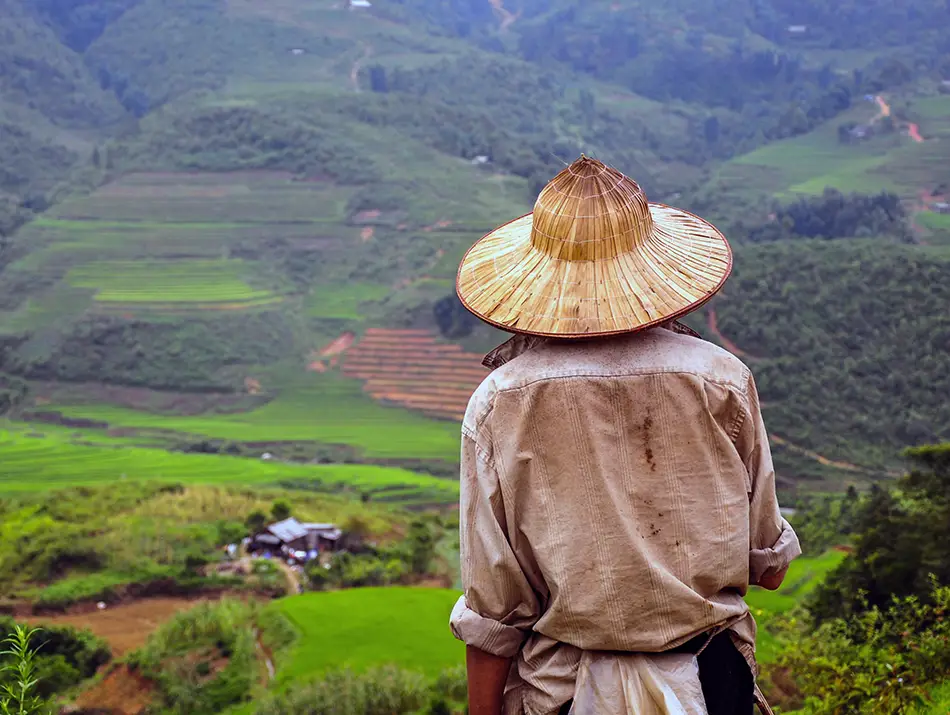
Explore Villages like Hau Thao, Sa Seng, or Hang Da
These villages are located on hillsides and in valleys away from the main trekking routes. They offer exceptional views of rice terraces and a quieter atmosphere. Life here continues with less influence from tourism. There are fewer homestays and restaurants.
You can observe farming, children playing, and daily chores. The paths to these villages can be steep and unpaved. A local guide is highly recommended for navigation and to facilitate respectful interaction. You are a guest in their community.
- How to Get There: Best reached by motorbike or with a guide on a custom trek.
- Time Needed: A half-day to a full day.
- Combines With: A self-guided motorbike tour of the Sapa region.
- Travel Tip: Learn a few words in Vietnamese, like “xin chào” (hello) and “cảm ơn” (thank you), to show respect.
Planning Your Trip
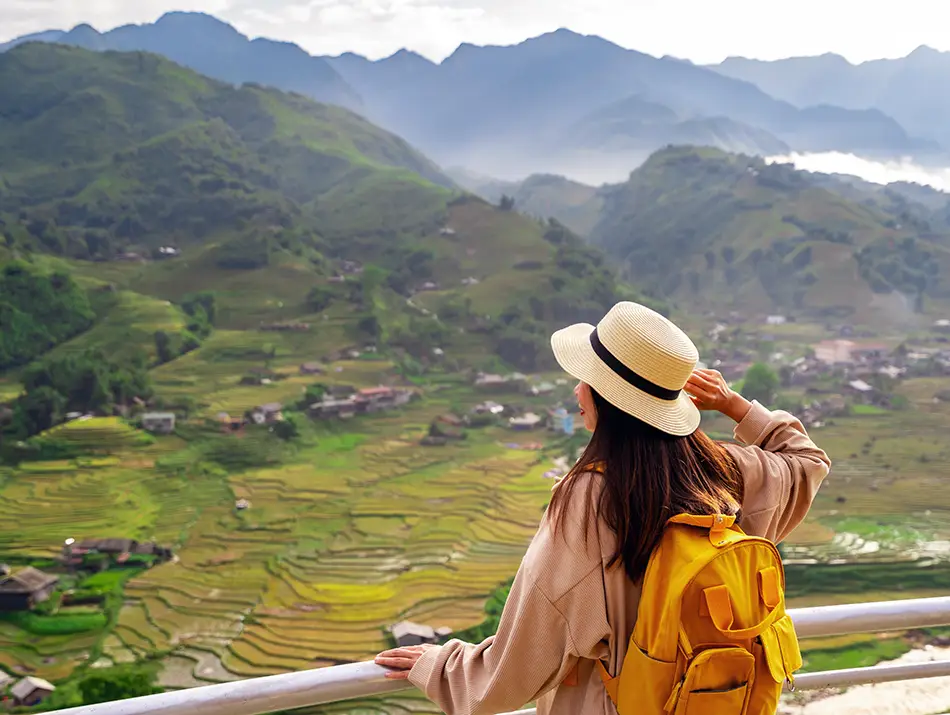
Best Time to Visit Sapa
The ideal months to visit are from late August to early October. During this period, the weather is generally cool and dry, and the rice terraces turn a brilliant gold at their peak before the harvest. This window offers the best conditions for trekking, with clearer skies and comfortable temperatures.
Another excellent time is from March to May, when the weather is warm and pleasant and many local flowers are in bloom. Avoid the summer months from June to August, which bring heavy rains and occasional landslides. Winter, from December to February, is cold and foggy, with limited visibility on many days.
How Long to Stay in Sapa
A stay of three days and two nights is perfect for most visitors. This provides enough time for a multi-hour trek through the Muong Hoa Valley, a visit to a local village, and exploration of Sapa town itself. This duration allows you to experience the region without feeling rushed. A perfect Sapa itinerary often balances organized trekking with time for independent discovery.
A shorter stay of two days and one night is possible but will feel hurried. For serious trekkers wanting to explore remote villages or conquer Fansipan on foot, a stay of four to five days is recommended.
How to Get to Sapa: Transportation Options
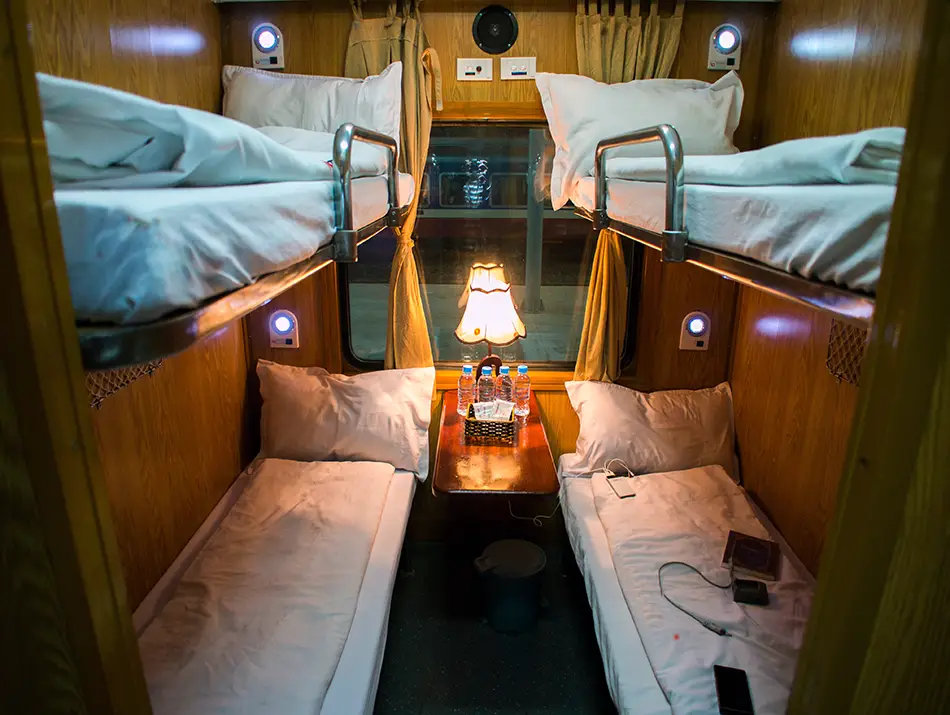
Most travelers start their journey from Hanoi. There are three primary options for how to get to Sapa.
The most popular choice is the direct sleeper bus. These buses depart from the My Dinh Bus Station or designated pickup points in Hanoi’s Old Quarter. The trip takes about 5-6 hours and costs between 300,000-450,000 VND ($12-18 / €11-16).
Alternatively, you can take an overnight train from Hanoi to Lao Cai, the provincial capital. The journey is comfortable but takes around 8 hours. From Lao Cai station, you must take a 1-hour shuttle bus or taxi up the mountain to Sapa, which costs an additional 50,000 VND ($2 / €1.80).
For more comfort, limousine vans offer a faster, more direct route. These smaller vans take about 5 hours and offer plusher seating. The cost is higher, ranging from 400,000-550,000 VND ($16-22 / €14-20).
Getting Around Sapa
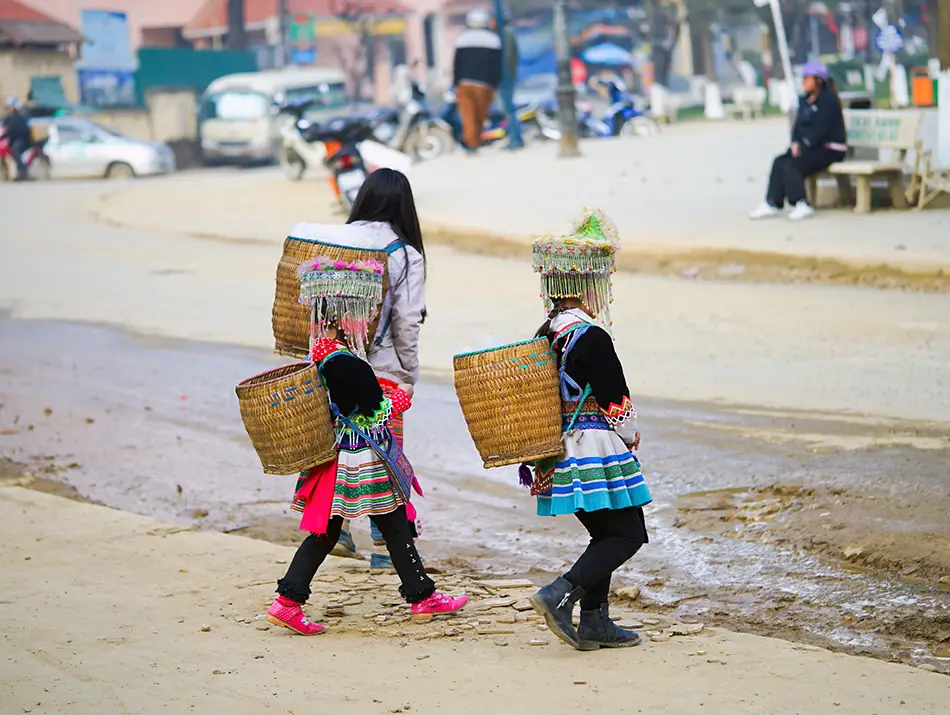
Sapa town itself is small and very walkable. You can easily explore the central market, church, and lake on foot. Getting around Sapa to reach the surrounding valleys and villages requires transport.
Renting a motorbike is a popular option for independent travelers, offering freedom to explore at your own pace. Taxis are available, but be sure to agree on a price before starting your journey, as meters are not always used. For longer trips, such as to the Tram Ton Pass, hiring a private car and driver for a half or full day is a convenient choice.
Many guided treks include transportation to and from the trailheads.
Is it expensive to visit Sapa?
Is Sapa expensive? It depends entirely on your travel style. Overall, it can be an affordable destination, though tourist-focused services can be pricey. Homestays and local food stalls offer great value, while high-end hotels and Western restaurants will increase your budget significantly.
- Budget Double Room: 300,000–500,000 VND ($12–20 / €11–18)
- Sit-Down Meal: 150,000–250,000 VND ($6–10 / €5–9)
- Typical Street Food: 30,000–70,000 VND ($1.20–2.75 / €1.10–2.50)
- Fansipan Cable Car: 800,000 VND ($31 / €29)
- Taxi Short Trip (in town): 50,000 VND ($2 / €1.80)
- Motorbike Rental (per day): 100,000–150,000 VND ($4–6 / €3.60–5.40)
- Beer in Bar: 30,000–60,000 VND (US $1.20–2.40/€1.10–2.20)
- Coffee at Cafe: 35,000 VND ($1.40 / €1.25)
Where to Stay in Sapa
Accommodation in Sapa ranges from basic homestays to luxury mountain resorts. The central town offers the most convenience with hundreds of hotels and guesthouses packed around the main square and Cau May Street. This area is ideal for easy access to restaurants and markets but can be noisy and crowded.
For a more peaceful experience, consider staying in the hills just outside the town center. Hotels here often provide stunning views of the Muong Hoa Valley.
A third option, and perhaps the most authentic, is a village homestay in places like Ta Van or Ta Phin. These offer a chance to stay with a local family, share meals, and experience rural life firsthand, though amenities are often basic.
Sapa Itinerary Ideas
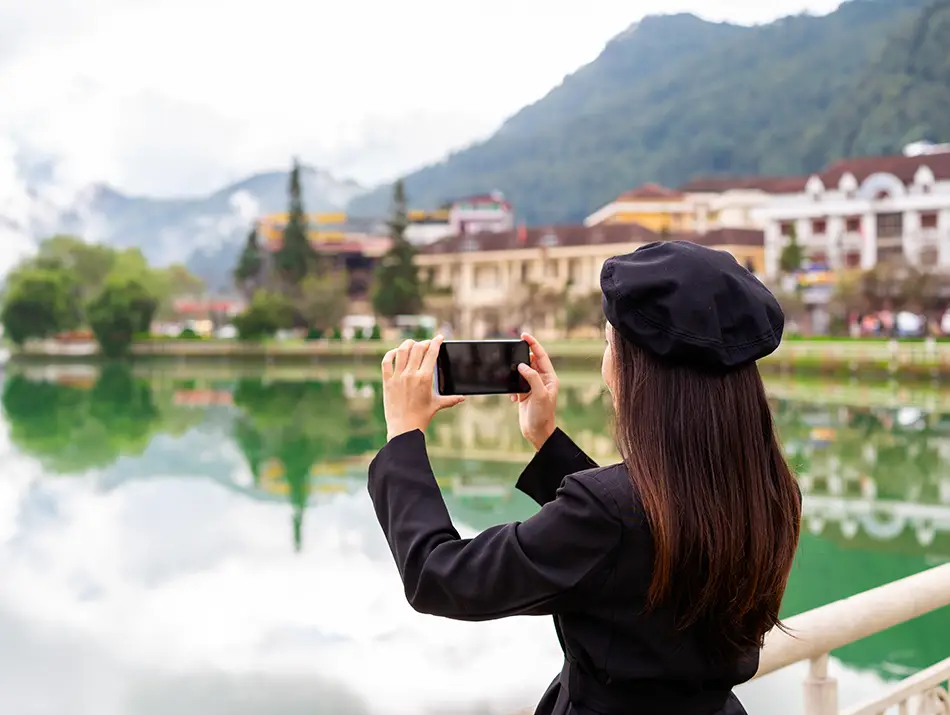
Sapa Itinerary: 1 Day
This itinerary focuses on the main sights accessible from Sapa town. In the morning, take the funicular and cable car to Fansipan Peak. After returning, have lunch in town. In the afternoon, walk down to Cat Cat Village.
Explore the village and then take a motorbike taxi back up. Finish the day at the Sapa Stone Church and Ham Rong Mountain for a view of the town at sunset.
Sapa Itinerary: 2 Days
Day 1: Follow the 1-day itinerary (Fansipan, Cat Cat Village, Ham Rong Mountain). In the evening, explore the Sa Pa Night Market for dinner.
Day 2: Take a motorbike tour or hire a taxi for the day. Drive to the Silver Waterfall and Love Waterfall. Continue to the Tram Ton Pass viewpoint. In the afternoon, explore a part of the Muong Hoa Valley. Drive to the Ta Van village area to see the rice terraces before returning to Sapa.
Best Sunset Spots in Sapa
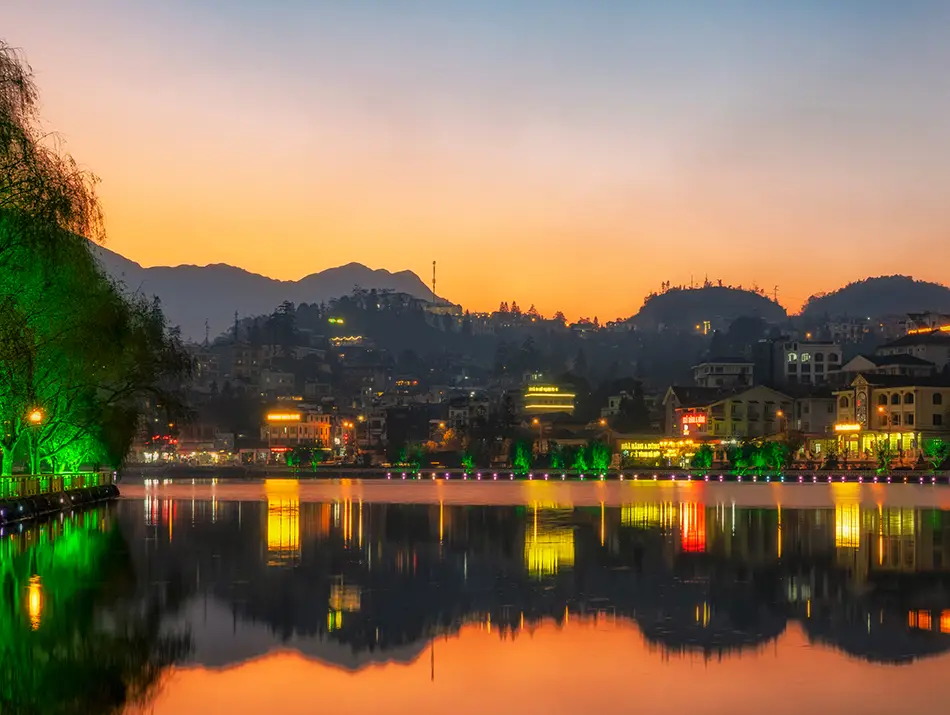
Sapa offers several beautiful places to watch the sunset without needing to head far out of town. One of the best is Ham Rong Mountain, where a short walk from the town center brings you to panoramic viewpoints overlooking Sapa and the surrounding valleys.
If you prefer something easy and relaxed, several cafés on the town’s western side have terraces perfectly positioned for watching the sun set behind the rolling peaks with a warm drink in hand.
Food to Try in Sapa
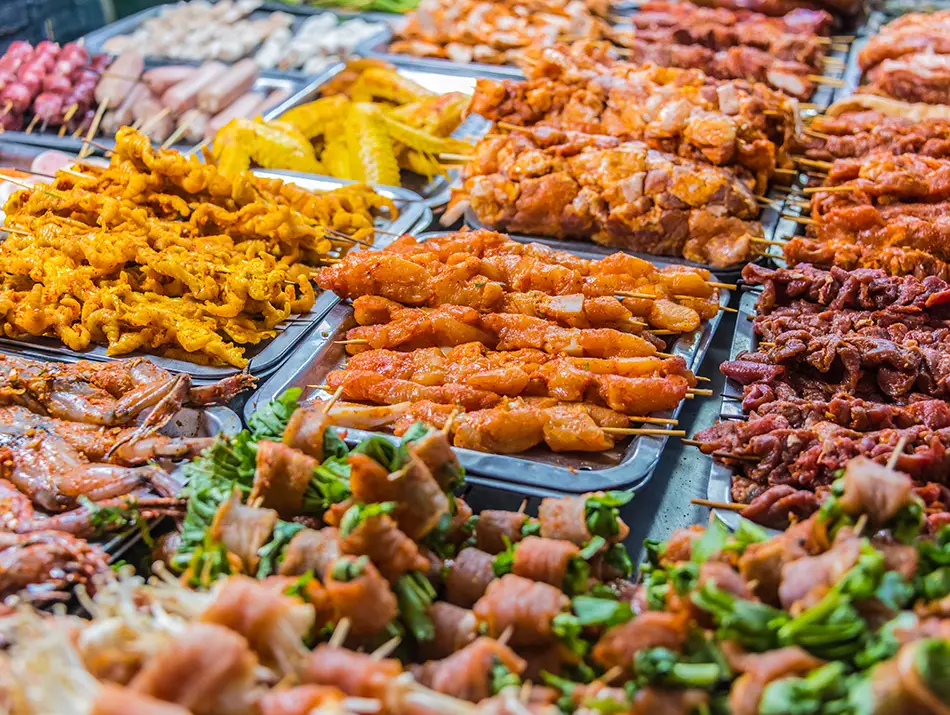
The local food in Sapa is a unique blend of Vietnamese and ethnic minority traditions. A must-try dish is Thang Co, a hearty and pungent stew traditionally made from horse meat, organs, and a mix of local spices. For something less adventurous, try Try Lon Cáp Nách — a small free-range pig raised in the highlands (its name means ‘pig carried under the arm’) — often grilled over charcoal for crispy skin and tender meat.
Grilled dishes are also very popular, especially at the night market. You can find skewers of pork, chicken, vegetables, and even sticky rice grilled over hot coals. Finally, don’t miss Com Lam, sticky rice cooked inside a tube of bamboo, which gives it a subtle, fragrant flavor. This is often served alongside grilled meat.
For more information on Vietnamese cuisine, check out the best dishes to try in Vietnam list.
Local Beverages
Sapa has several unique local alcoholic drinks. Tao Meo wine is made from wild apples (Docynia indica) collected in the Hoang Lien Son mountains. The resulting liqueur is brown-toned, sweet-acidic, and strongly aromatic.
Another common drink is Ruou Ngo, or corn wine. This potent spirit is a staple in many H’mong households and is often served to guests as a sign of hospitality.
For a non-alcoholic option, sample locally grown herbal teas made from mountain-grown leaves and herbs, served warm and widely believed to support health in the cooler highland climate.
Where to Eat & Drink
Sapa offers a wide range of dining options, from simple local eateries to modern cafés with sweeping valley views. For the largest concentration of restaurants serving both local dishes and Western comfort food, explore the streets south of the central square, especially Muong Hoa Street and Fansipan Street. Many places here have terraces overlooking the valleys, making them ideal for a relaxed meal with a view.
If you’re looking for affordable grilled skewers, noodle dishes, or hot pots, head to the evening food stalls around the lake area or the small vendors along Muong Hoa Street. These spots are the most consistent for good quality and reasonable prices.
For a more local experience, wander through the smaller side streets away from the main tourist routes. These family-run eateries serve simple but authentic home-style meals, often at lower prices than the restaurants in the busier areas.
Responsible Travel Tips
Responsible tourism is crucial for preserving Sapa’s unique culture and environment. When trekking, hire a local guide from one of the ethnic minority communities. This ensures your money directly supports the local economy.
Avoid giving money or candy to children, as it encourages them to beg instead of attending school. Instead, support their families by purchasing handicrafts directly from the artisans who make them.
Politely decline persistent sellers and be mindful of your waste. The region struggles with plastic pollution, so carry a reusable water bottle and refuse single-use plastics whenever possible. These simple actions can help mitigate the negative impacts of tourism.
Learn more with our sustainable traveling guide.
Know Before You Go

Local Tips
Sapa’s weather is notoriously unpredictable. Always pack layers, including a warm jacket and a raincoat, regardless of the season. It can be sunny one moment and foggy the next. While ATMs are available in town, many villages operate on a cash-only basis, so it’s wise to carry enough Vietnamese Dong. Bargaining is common at the markets, but always do so with a respectful and friendly attitude. A smile goes a long way.
Accessibility
Accessibility in Sapa is extremely limited for travelers with mobility impairments. The town is built on a steep hillside with many stairs and uneven pavements, making wheelchair navigation very difficult. Most attractions, including villages and rice terraces, are only reachable via trekking paths that are often steep, muddy, and rocky.
Safety Tips
Sapa is generally a safe destination, but it’s important to take standard precautions. When trekking, especially on multi-day trips, it’s highly recommended to hire a local guide who knows the terrain and weather patterns. If you rent a motorbike, be sure you have experience driving on steep, winding mountain roads.
While outright scams are rare, you may encounter overly persistent vendors or tours that don’t match their advertised difficulty level.
Etiquette Basics
Respect for local cultures is paramount in Sapa. Always ask for permission before taking photos of people, especially elders, and dress modestly when visiting villages or private homes. It’s also polite to remove your shoes before entering a house.
When giving or receiving money — whether paying for crafts, food, or services — use both hands, as this is considered respectful in Vietnamese etiquette. These small gestures are greatly appreciated by the local communities.
Family with Kids Tips
Sapa can be a rewarding destination for families with older children who enjoy the outdoors. The Fansipan cable car is an easy crowd-pleaser, offering sweeping views without any strenuous effort. For families visiting Cat Cat Village, the downhill walk is manageable, but the return climb is steep — most visitors with children choose to take an authorized electric cart or a taxi back up to town.
The terrain can be difficult for toddlers, and strollers don’t handle well outside the town center, so plan accordingly. Bringing snacks and extra layers will help everyone stay comfortable as the weather changes throughout the day.
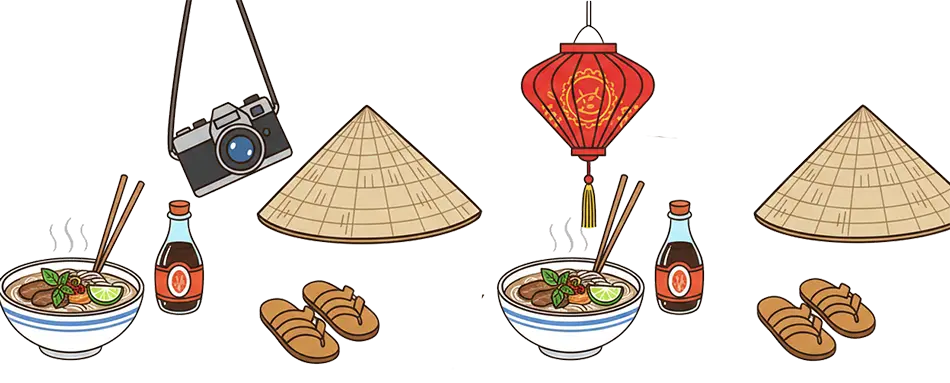
Frequently Asked Questions on Sapa
The best things to do in Sapa focus on its natural beauty and culture. Key activities include trekking through the Muong Hoa Valley to visit ethnic villages, riding the cable car to the summit of Fansipan, and exploring the Sapa town market.
The best time to visit Sapa is during the dry seasons from March to May and September to November. These months offer the most pleasant weather for trekking and the most beautiful scenery, from green terraces in spring to golden ones in autumn.
To get to Sapa from Hanoi, you can take a 5-6 hour sleeper bus or limousine van for a direct journey. Another option is the 8-hour overnight train to Lao Cai, followed by a 1-hour bus or taxi ride up to Sapa.
Sapa is considered very safe for solo travelers. The main safety concerns relate to trekking and transportation rather than crime. Hiring a local guide for hikes is recommended for safety and support. The local communities are generally welcoming and hospitable to visitors.
Some top Sapa local food dishes include Thang Co, a traditional horse meat stew, and Lon Cap Nach, a succulent roasted pig. Also, be sure to try Com Lam, which is sticky rice cooked in bamboo, and the various grilled skewers found at the night market.
Without the Hype: Is Sapa Worth Visiting?

Sapa is a place of incredible beauty, though its rising popularity has introduced some challenges. The town center can feel overly commercial, and the sweeping landscapes are sometimes hidden by thick mountain fog. Even so, trekking through its vast terraced valleys and connecting with the communities who live there remains one of Northern Vietnam’s most memorable and meaningful travel experiences.
You’ll like Sapa if:
- You love hiking and dramatic mountain landscapes.
- You are genuinely interested in the cultures of Vietnam’s ethnic minorities.
- You enjoy cool, fresh mountain air as a break from Southeast Asia’s heat.
You might skip it if:
- You are looking for an untouched, off-the-beaten-path experience.
- You dislike crowds and commercialized tourist centers.
Good alternatives:
- Mu Cang Chai: For travelers seeking a quieter, less-developed destination with some of Vietnam’s most impressive terraced rice paddies and an authentic ethnic-minority experience.
- Mai Chau: For a gentler, more accessible valley escape closer to Hanoi, with lush rice fields, stilt-house villages, and a relaxed rural atmosphere.
We hope this guide on the best things to do in Sapa helps you decide if this mountain town fits your travel interests. For more information on the country, check out other Vietnam travel guides on our website. We wish you smooth planning and an unforgettable trip.

